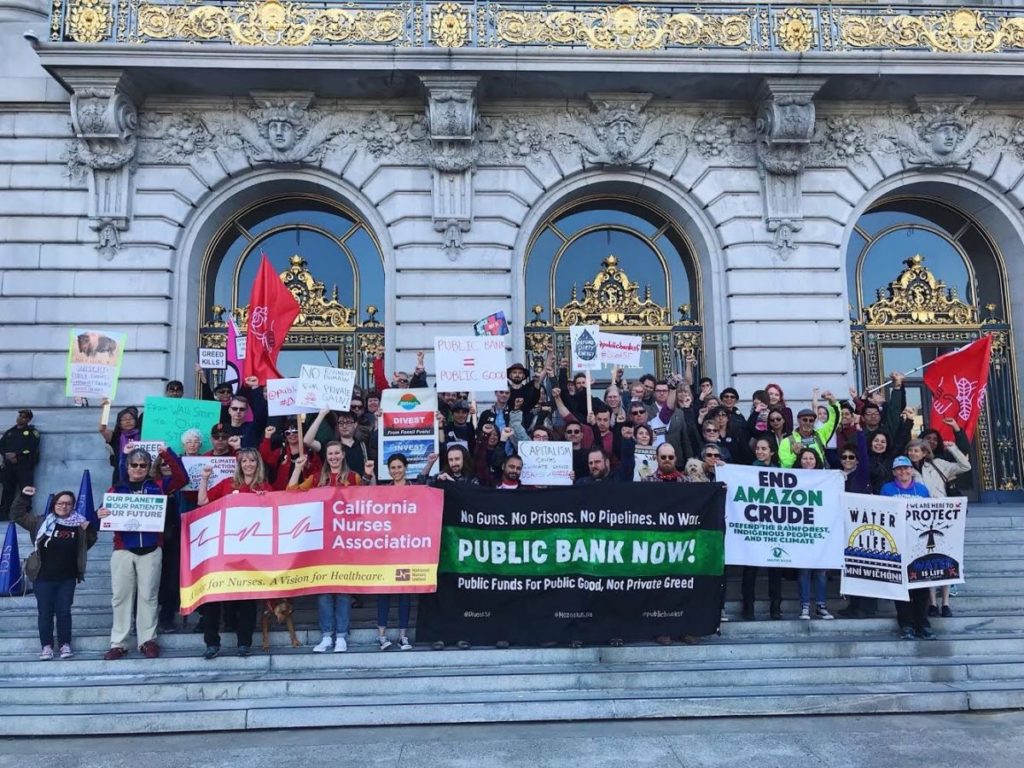This is part four of a series of blog posts about building community wealth in Santa Cruz. Read the previous post here.
In Ted Howard’s definition of “community wealth” that we included in Part 1 of this series, he mentions the importance of “locally rooted ownership.” So far, we’ve discussed locally rooted institutions, or anchor institutions, and locally and community-owned housing. Another major player in building community wealth are banks and other financial institutions.
To learn more about public banking in particular, we spoke with Brett Garrett, a local Santa Cruz resident who has been involved in the statewide movement for Assembly Bill 857 and public banking.
We asked him to share what a public bank is and how it works. He writes:
“A public bank is a government-owned bank. For example, the Bank of North Dakota is owned by the State of North Dakota. In California, cities such as Los Angeles and San Francisco hope to create their own public banks, and there are also efforts to create regional banks that would be co-owned by multiple jurisdictions.
“Where the money comes from and how it’s used can vary, but in North Dakota the primary sources are deposits from the state and its agencies that are required to place their funds in the bank. The funds can be used for public infrastructure projects and other needs, often in cooperation with local financial institutions. We envision public banks primarily as wholesale banks. While a public bank can provide retail services in some situations, public banks under AB 857 would not be allowed to compete with community banks or credit unions.
“AB 857, the Public Banking Act, will allow local governments in California to set up municipal or regional Public Banks with a goal of serving the community instead of the usual banking goal of profits for shareholders. There are more details about AB 857 here. This bill was officially approved by the legislature in early September, so now we’re waiting for the Governor to sign it into law.”

We also asked Garrett to explain how public banks can support local economies and build community wealth. He writes,
“Public banks can offer reduced-cost depository services to local governments. It’s estimated that public banks will halve the financing costs of large infrastructure projects. Public bank profits go back to the community instead of to shareholders. A public bank can respond quickly to emergency situations. The Bank of North Dakota is one of the very few banks that had no trouble during the 2008 recession. Public banks in California will be responsive to California values, including clean energy and other green initiatives.
“Our local government bodies are very interested in participating in a public bank, probably as part of a regional effort (like Monterey Bay Community Power) or possibly in cooperation with a large city. AB 857 has been endorsed by Santa Cruz County and also by the Cities of Santa Cruz, Watsonville, and Capitola.”
As Garrett mentions, public banks can help their local governments finance the projects and programs that are needed to support the local community. In the next and final section of this series, we’ll look at an example of a community project that could help create more sense of place, connection, and community in downtown Santa Cruz.
This is part four of a series of blog posts about building community wealth in Santa Cruz. Read the next post here.
Series Outline:

